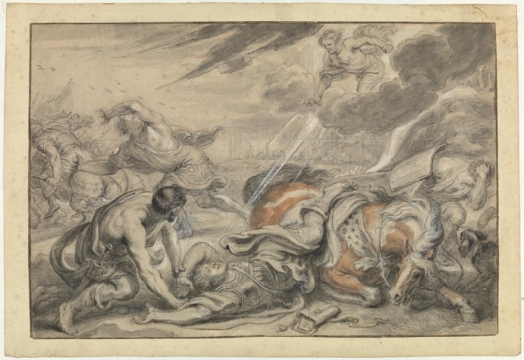Abraham van Diepenbeeck
17th Century
Type:
Drawing
Material / technique:
Black stone, pen and brown ink, red-brown ink, grey wash, highlights of white gouache
Dimensions:
229 x 338 mm
Type of acquisition:
Acquired by Léon Courtin - Marcelle Bouché Fund
Year of acquisition:
2016
Depository institution:
Royal Museums of Fine Arts of Belgium, Brussels
